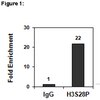The specification and global reprogramming of histone epigenetic marks during gamete formation and early embryo development in C. elegans.
Samson, M; Jow, MM; Wong, CC; Fitzpatrick, C; Aslanian, A; Saucedo, I; Estrada, R; Ito, T; Park, SK; Yates, JR; Chu, DS
PLoS genetics
e1004588
2014
요약 표시
In addition to the DNA contributed by sperm and oocytes, embryos receive parent-specific epigenetic information that can include histone variants, histone post-translational modifications (PTMs), and DNA methylation. However, a global view of how such marks are erased or retained during gamete formation and reprogrammed after fertilization is lacking. To focus on features conveyed by histones, we conducted a large-scale proteomic identification of histone variants and PTMs in sperm and mixed-stage embryo chromatin from C. elegans, a species that lacks conserved DNA methylation pathways. The fate of these histone marks was then tracked using immunostaining. Proteomic analysis found that sperm harbor ∼2.4 fold lower levels of histone PTMs than embryos and revealed differences in classes of PTMs between sperm and embryos. Sperm chromatin repackaging involves the incorporation of the sperm-specific histone H2A variant HTAS-1, a widespread erasure of histone acetylation, and the retention of histone methylation at sites that mark the transcriptional history of chromatin domains during spermatogenesis. After fertilization, we show HTAS-1 and 6 histone PTM marks distinguish sperm and oocyte chromatin in the new embryo and characterize distinct paternal and maternal histone remodeling events during the oocyte-to-embryo transition. These include the exchange of histone H2A that is marked by ubiquitination, retention of HTAS-1, removal of the H2A variant HTZ-1, and differential reprogramming of histone PTMs. This work identifies novel and conserved features of paternal chromatin that are specified during spermatogenesis and processed in the embryo. Furthermore, our results show that different species, even those with diverged DNA packaging and imprinting strategies, use conserved histone modification and removal mechanisms to reprogram epigenetic information. | Immunofluorescence | 25299455
 |
KDM2B links the Polycomb Repressive Complex 1 (PRC1) to recognition of CpG islands.
Farcas, AM; Blackledge, NP; Sudbery, I; Long, HK; McGouran, JF; Rose, NR; Lee, S; Sims, D; Cerase, A; Sheahan, TW; Koseki, H; Brockdorff, N; Ponting, CP; Kessler, BM; Klose, RJ
Elife
1
e00205
2012
요약 표시
CpG islands (CGIs) are associated with most mammalian gene promoters. A subset of CGIs act as polycomb response elements (PREs) and are recognized by the polycomb silencing systems to regulate expression of genes involved in early development. How CGIs function mechanistically as nucleation sites for polycomb repressive complexes remains unknown. Here we discover that KDM2B (FBXL10) specifically recognizes non-methylated DNA in CGIs and recruits the polycomb repressive complex 1 (PRC1). This contributes to histone H2A lysine 119 ubiquitylation (H2AK119ub1) and gene repression. Unexpectedly, we also find that CGIs are occupied by low levels of PRC1 throughout the genome, suggesting that the KDM2B-PRC1 complex may sample CGI-associated genes for susceptibility to polycomb-mediated silencing. These observations demonstrate an unexpected and direct link between recognition of CGIs by KDM2B and targeting of the polycomb repressive system. This provides the basis for a new model describing the functionality of CGIs as mammalian PREs.DOI:http://dx.doi.org/10.7554/eLife.00205.001. | | 23256043
 |



















